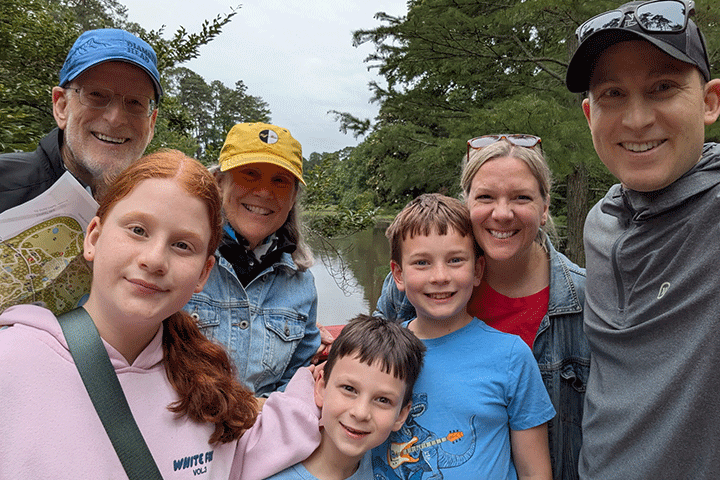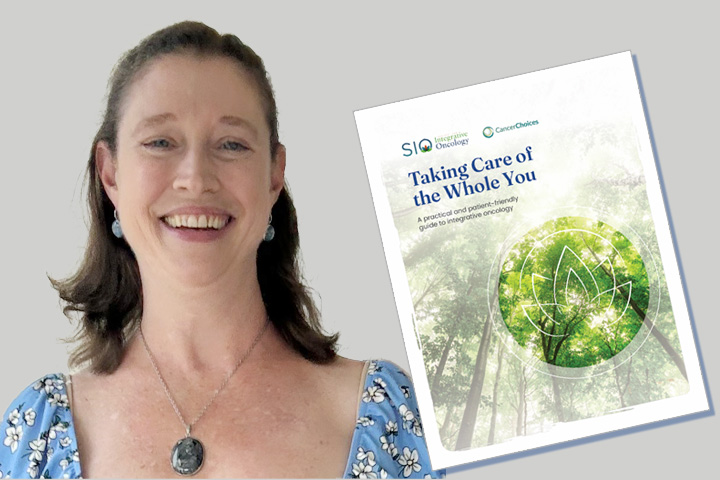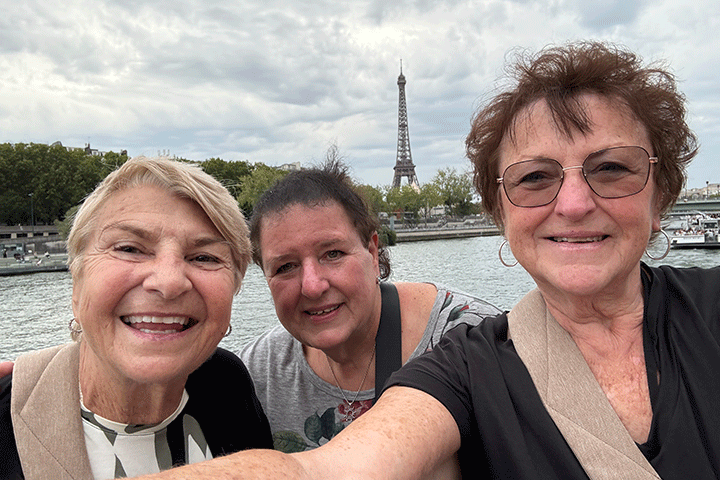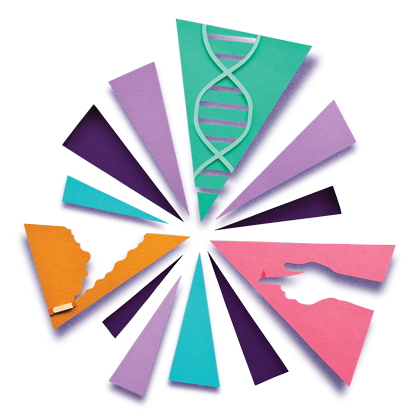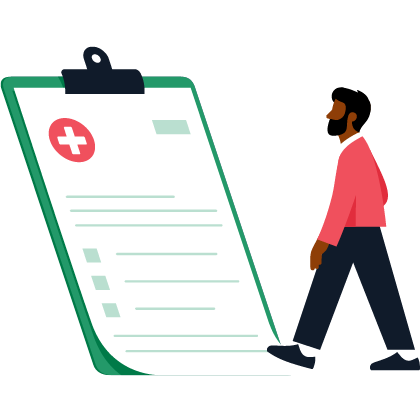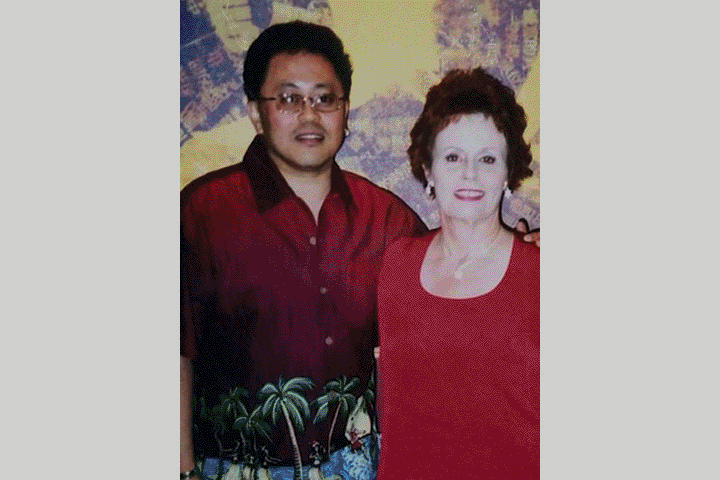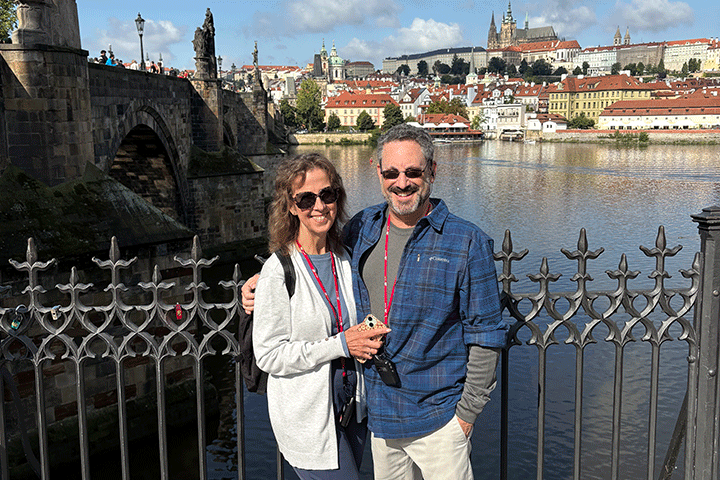Ready to Fight
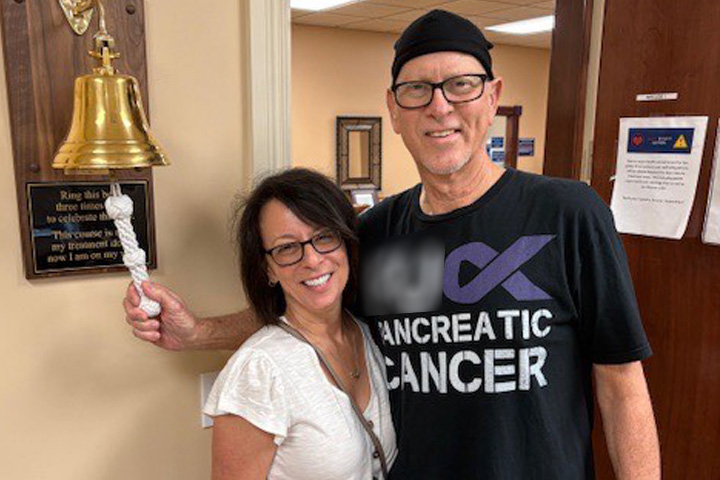
- Regular checkups because lung cancer runs in the family
- Upper abdominal pain leads to diagnosis
- Chemo-Whipple-chemo treatment plan
With a family history of lung cancer, heart disease, and colon polyps, I made significant efforts to stay on top of my health.
I met annually with my GP as a preventative measure. She helped me monitor my lungs, heart, and lower GI tract. As a former smoker, I had to be on top of my health. My father died at the age of 60 from lung cancer. He was a heavy smoker. My brother died at 68 from a Pancoast tumor (a rare and hard-to-detect tumor on the lungs). He was a fit man, yet regular chest x-rays did not show the tumor that was lurking behind his collarbone. By the time it was discovered, it was too late.
My mother had a quadruple bypass at 77 after battling high blood pressure, hypertension, and high cholesterol for most of her adult life. Accordingly, my cardiologist ordered a calcium score and an echocardiogram. He placed me on a daily regimen of statins to address hereditary cholesterol issues. I’ve had two colonoscopies since I turned fifty. In a nutshell, I felt like I was doing all the right things.
An Unexpected Turn
I thought I was looking at all the right places . . . until I found out I wasn’t. I began experiencing a dull pain in my upper right side under the ribcage in 2024. I underwent an ultrasound, MRI, and CT scan. The ultrasound detected a mass on the head of my pancreas. Blood tests showed that my liver was failing. The results of the MRI confirmed the mass on the head of the pancreas and that it appeared cancerous. It was impinging on my bile duct, which was causing liver failure. I never saw it coming.
Having lost my father-in-law to pancreatic cancer in 2008, my wife and I knew there was little time to waste. My wife sprang into action. The first call she made was to the Pancreatic Cancer Action Network (PanCAN) to see which Florida cancer centers had the highest-rated oncologists and pancreatic surgeons. Between August 20 and 23, my wife called every cancer center in the state. Not all of them accepted our insurance. She also reached out to everyone we knew. Our options were dwindling when my son and daughter-in-law introduced us to an acquaintance of theirs, Dr. Matthew Salzberg, whom I credit with saving my life.
The Right Person at the Right Time
“Dr. Matt” is an oncologist Memorial Cancer Institute, part of the Memorial Healthcare System in Hollywood, Florida. He instructed us to report to Memorial Regional Hospital’s emergency room for more tests. When I walked into the ER, I was jaundiced, and my urine was beginning to turn dark yellow and brown. The CT scan confirmed a tumor on the head of my pancreas, which was causing a blockage in the bile duct and my subsequent liver failure. I was immediately admitted to the oncology ward.
The next morning, a metal stent was installed to open the blocked bile duct. My doctor also took a biopsy of the tumor. He determined that the tumor was isolated to the head of the pancreas and had not metastasized to the liver or stomach. The next day I was again put under anesthesia so a chemo port could be installed in the upper part of my right chest.
I met my oncologist Dr. Jesus Fabregas and surgeon Dr. Christopher Gannon while recovering from the procedures. We discussed at length the course of action for what was now determined to be stage II pancreatic adenocarcinoma. There was a long road ahead.
Chemo-Whipple-Chemo
The biopsy showed that I have a KRAS G12V genetic mutation. This critical piece of information helped determine my treatment plan, which ended up being a chemo-Whipple-chemo regimen. I was discharged from the hospital about four days later. Since we live one-and-a-half hours north of the hospital, I secured a local oncologist near our home, Dr. Nicholas Iannotti of HCA Florida Healthcare, in Fort Pierce, to begin an eight-round chemotherapy regimen of FOLFIRINOX. Dr. Fabregas and Dr. Iannotti worked well together to administer the chemo locally, so we did not have to drive to Hollywood every two weeks.
I also had to wear a pump for 48 hours after the initial regimen. I received chemo on Thursdays, and the pump was removed from my port on Saturdays. I followed this process every other week for eight weeks.
At the end of the fourth round, we went back to Memorial for a follow-up CT scan. It showed some progress in shrinking the tumor, but not enough to satisfy Dr. Gannon. He was also concerned about the tumor’s proximity to the superior mesenteric vein (SMV). If the tumor impinged on the SMV, the Whipple might not be an option after all.
Dr. Gannon made a crucial decision regarding my treatment: He changed the course from chemo only to a combination of radiation and oral chemotherapy. Dr. Fabregas consulted Memorial’s radiation oncologist team, and they referred me to Dr. William Crook at GenesisCare in Stuart, Florida, so I would not have to move to Hollywood to receive radiation treatment.
Dr. Crook and his team administered 30 rounds of radiation while concurrently I was taking capecitabine (brand name Xeloda) oral chemo pills daily. The final CT scan showed stabilization of the tumor, no metastases, and no impingement on the SMV. Dr. Gannon was satisfied with this outcome and scheduled my Whipple procedure for February 17, 2025. After a weeklong stay in the hospital, I began my recovery at home. At the two-week point we returned to Memorial for a surgical follow-up with Dr. Gannon. Based on the pathology, Dr. Gannon was confident all cancerous cells were removed during surgery, and the results showed all margins were clear.
The Follow-Up
About three weeks later we saw Dr. Fabregas about the adjuvant (post-op) chemo plan. He prescribed the chemo drugs Abraxane and Gemzar. The treatment would be scheduled once a week for three consecutive weeks and one week off for four months. Dr. Fabregas also ordered quarterly CT scans to make sure this insidious cancer did not appear elsewhere in my body.
After all that has been said and done, my body reacted positively to the treatments, and I am doing well. I have been through four rounds of FOLFIRINOX, 30 rounds of chemoradiation with capecitabine, one Whipple surgery, and seven adjuvant treatments of Abraxane and Gemzar. Even though the adjuvant chemo caused complete hair loss and my depleted blood levels are delaying my completion date, I really can’t complain.
The Fight of My Life
Pancreatic cancer has been the fight of my life, and many lessons have been learned to this point. Early detection, which is rare in pancreatic cancer, is critical if possible. On April 26, 2025, I participated in PanCAN’s Purple Stride event in Boca Raton, Florida, and was able to walk the entire way (three miles) with our 26-person team. I am getting stronger each day, and I am ready to complete this part of my fight against this deadly disease.
I underwent an adjuvant chemo regimen of Abraxane and Gemzar with a goal of being completely cancer-free. Additionally, my CT scan in May showed no cancer activity.
A CT scan on August 7 showed no evidence of disease. I completed my twelfth and final chemotherapy treatment on August 11 and rang the bell! We are now working with Dr. Fabregas and many others to locate an adjuvant clinical trial that specializes in my KRAS mutation. There have been promising news articles recently regarding clinical trials and pancreatic cancer treatments.
On a light note, my hair is beginning to grow again!
Russell shared information about advocating for yourself, which he feels all patients should know in “Six Important Points.”
